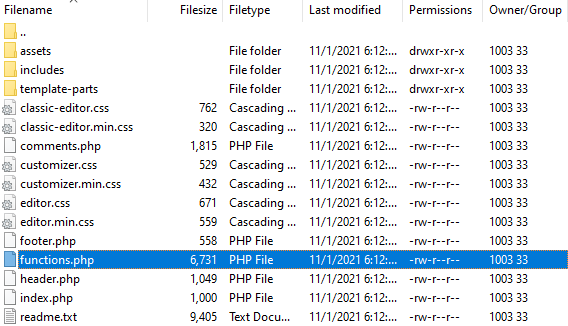Looking to enhance your Python programming skills? Understanding how to work with bytearray in Python is essential for handling data efficiently.
In this article, we will provide an in-depth overview of the bytearray() function, its syntax, parameters, and return value.
We will explore various examples of using bytearray() to create arrays of bytes from strings, integers, and iterable lists.
Discuss converting bytes to strings, hex strings, and bytearray objects, as well as slicing and manipulating bytes objects. By the end of this article, you will have a solid grasp of how to utilize bytearray in Python effectively.
Key Takeaways:
Contents
- 1 Key Takeaways:
- 2 Introduction to Bytearray in Python
- 3 Syntax of bytearray() Function
- 4 Parameters of bytearray() Function
- 5 Return Value of bytearray() Function
- 6 Examples of bytearray() Function Explore various examples of using the bytearray() function for creating byte arrays from strings, integers, and iterable lists. For instance, when converting a string to a byte array, the bytearray() function allows seamless transformation. Here’s an example: string_data = ‘hello’ byte_array_data = bytearray(string_data, ‘utf-8’) In this case, the string ‘hello’ is converted into a byte array using the UTF-8 encoding. Regarding initializing byte arrays from integers, the bytearray() function provides flexibility: integer_data = 65 byte_array_int = bytearray([integer_data]) In this scenario, the integer 65 is converted into a byte array. Creating byte arrays from iterable lists is another powerful aspect: iterable_list = [97, 98, 99] byte_array_iterable = bytearray(iterable_list) Here, the list [97, 98, 99] is transformed into a byte array. Creating Array of Bytes from a String One common use case of the bytearray() function is creating an array of bytes from a given string. When using the bytearray() function in Python, the input string is encoded into bytes using the specified encoding type, such as UTF-8 or ASCII. This process involves transforming the characters of the string into their corresponding byte representations according to the chosen encoding standard. Once the string has been converted into a byte array, each character is represented by a numerical value that corresponds to its byte representation. This allows for efficient manipulation of data at the byte level, which can be useful in scenarios such as network communication, file handling, and cryptography. Creating Array of Bytes of Given Integer Size Another scenario involves creating an array of bytes of a specific size using integer values and bytearray() function. When utilizing the bytearray() function in Python, programmers can create byte arrays with fixed sizes determined by integer values. By specifying the desired number of bytes, this method enables the generation of byte sequences suited for various applications. This process is particularly crucial when working with binary data, as it allows for the precise allocation of memory space based on integer inputs. For instance, transmitting data over a network or storing files require handling information in bytes, making byte arrays an essential aspect of programming for these tasks. Creating Array of Bytes from an Iterable List Using the bytearray() function, byte arrays can also be initialized from elements of an iterable list, providing flexibility in data handling. When working with byte arrays in Python, the bytearray() function allows for efficient manipulation and storage of binary data. By leveraging the capability to initialize byte arrays from iterable lists, developers can easily convert various data structures into bytes. This approach significantly streamlines the handling of binary data within Python applications. For instance, consider a scenario where a list of integers needs to be converted into a byte array. By passing this list as an argument to the bytearray() function, a corresponding byte representation can be quickly generated. Convert Bytes to String
- 7 Convert Hex String to Bytes
- 8 Numeric Code Representing a Character of a Bytes Object
- 9 Mapping Table Characters for Use with a Bytes Object
- 10 Convert Bytes to Hex
- 11 Character Retrieval from Numeric Code in Bytes Objects
- 12 Determining the Length of a Bytes Object
- 13 Using Operators with Bytes Objects
- 14 Creating a Bytearray Object
- 15 Difference Between Bytes and Bytearray Object
- 16 Converting Bytes to Bytearray
- 17 Slicing a Bytes Object
- 18 Frequently Asked Questions
- 18.1 What is bytearray() in Python?
- 18.2 How do I create a bytearray in Python?
- 18.3 Can I modify a bytearray in Python?
- 18.4 What is the difference between bytearray() and bytes() in Python?
- 18.5 Can I convert a bytearray back to a string in Python?
- 18.6 Is it possible to create an empty bytearray in Python?
Introduction to Bytearray in Python
Bytearray in Python is a mutable sequence of bytes, allowing modifications after initialization.
This powerful data structure is particularly useful in scenarios where byte manipulation and data processing are essential. The bytearray() function is commonly employed to create bytearray objects, providing a more efficient and flexible way to work with binary data compared to strings.
Being mutable, bytearray allows for in-place modifications, making it a preferred choice for situations requiring dynamic byte-level changes. These properties make it a versatile tool in various applications such as network programming, cryptography, and file handling, where precise control over byte data is vital.
Overview of bytearray()
The bytearray() function in Python creates a mutable sequence of bytes, enabling the manipulation of byte data.
As a mutable object, a bytearray can be altered after creation, unlike bytes objects that are immutable. This feature makes bytearray() particularly useful when dealing with situations that require dynamic changes to byte-level data. By representing a sequence of bytes in a mutable format, developers can easily modify individual elements within the byte array, such as inserting, updating, or deleting bytes.
Working with bytearray() allows for efficient manipulation and processing of byte arrays, which is crucial in scenarios involving binary data handling, network protocols, cryptography, and other low-level programming tasks. The flexibility provided by the mutable nature of bytearray() enhances the versatility of Python in managing byte-oriented operations.
Importance of Bytearray in Python
Bytearray in Python plays a crucial role in scenarios requiring mutable byte sequences for data manipulation and processing.
These mutable sequences are essential when dealing with byte-level operations and transformations, offering the flexibility to modify individual bytes within the sequence.
Bytearray objects can be changed in place, which means they are efficient in scenarios where constant modification of byte data is needed. This feature allows for direct manipulation of data at the byte level, making it a powerful tool for tasks like encoding, decoding, and handling binary data efficiently.
Syntax of bytearray() Function
The syntax of the bytearray() function in Python follows the pattern: bytearray([source[, encoding[, errors]]]).
When using the bytearray() function in Python, you have the option to include three parameters: source, encoding, and errors. The ‘source’ parameter denotes the initial value that can be a list, string, or iterable; if not provided, an empty byte array is created. The ‘encoding’ parameter specifies the encoding of the source when it’s a string, defaulting to ‘utf-8’ if not specified. The ‘errors’ parameter determines how encoding and decoding errors are handled, with ‘strict’ being the default mode.
Parameters of bytearray() Function
The bytearray() function in Python accepts parameters such as source, encoding, and errors to customize byte array initialization and encoding handling.
When using the source parameter, you can pass various data types like strings, integers, or bytes-like objects to initialize the byte array. Encoding parameter allows you to specify the character encoding for the given source data, such as ‘utf-8’, ‘ascii’, or ‘latin1’.
The errors parameter plays a crucial role in managing encoding errors. Setting it to ‘strict’ raises a UnicodeDecodeError if the input cannot be decoded, while ‘ignore’ skips the problematic data. Additionally, ‘replace’ replaces the problematic data with a placeholder character.
Return Value of bytearray() Function
The bytearray() function in Python returns a mutable bytearray object containing the specified bytes data.
This returned bytearray object allows for modifications to its content, making it ideal for situations where you need to alter byte data without creating a new object each time. Due to its mutable nature, you can change individual elements within the bytearray using index assignments. The return value of the bytearray() function can then be further processed, such as by iterating over its elements, converting it to a different data type, or combining it with other byte-like objects.
Examples of bytearray() Function
Explore various examples of using the bytearray() function for creating byte arrays from strings, integers, and iterable lists.
For instance, when converting a string to a byte array, the bytearray() function allows seamless transformation. Here’s an example:
- string_data = ‘hello’
- byte_array_data = bytearray(string_data, ‘utf-8’)
In this case, the string ‘hello’ is converted into a byte array using the UTF-8 encoding.
Regarding initializing byte arrays from integers, the bytearray() function provides flexibility:
- integer_data = 65
- byte_array_int = bytearray([integer_data])
In this scenario, the integer 65 is converted into a byte array.
Creating byte arrays from iterable lists is another powerful aspect:
- iterable_list = [97, 98, 99]
- byte_array_iterable = bytearray(iterable_list)
Here, the list [97, 98, 99] is transformed into a byte array.
Creating Array of Bytes from a String
One common use case of the bytearray() function is creating an array of bytes from a given string.
When using the bytearray() function in Python, the input string is encoded into bytes using the specified encoding type, such as UTF-8 or ASCII. This process involves transforming the characters of the string into their corresponding byte representations according to the chosen encoding standard.
Once the string has been converted into a byte array, each character is represented by a numerical value that corresponds to its byte representation. This allows for efficient manipulation of data at the byte level, which can be useful in scenarios such as network communication, file handling, and cryptography.
Creating Array of Bytes of Given Integer Size
Another scenario involves creating an array of bytes of a specific size using integer values and bytearray() function.
When utilizing the bytearray() function in Python, programmers can create byte arrays with fixed sizes determined by integer values. By specifying the desired number of bytes, this method enables the generation of byte sequences suited for various applications.
This process is particularly crucial when working with binary data, as it allows for the precise allocation of memory space based on integer inputs. For instance, transmitting data over a network or storing files require handling information in bytes, making byte arrays an essential aspect of programming for these tasks.
Creating Array of Bytes from an Iterable List
Using the bytearray() function, byte arrays can also be initialized from elements of an iterable list, providing flexibility in data handling.
When working with byte arrays in Python, the bytearray() function allows for efficient manipulation and storage of binary data.
By leveraging the capability to initialize byte arrays from iterable lists, developers can easily convert various data structures into bytes. This approach significantly streamlines the handling of binary data within Python applications.
For instance, consider a scenario where a list of integers needs to be converted into a byte array. By passing this list as an argument to the bytearray() function, a corresponding byte representation can be quickly generated.
Convert Bytes to String
Converting bytes to a string in Python involves decoding the byte data using specified encoding methods.
Decoding byte data correctly is crucial to ensure the integrity and accuracy of the information being converted. By specifying the particular encoding method, such as UTF-8 or ASCII, Python can accurately translate the byte information into a readable string format. This process is essential for handling text-based data received in byte form, allowing it to be processed and manipulated effectively within Python. An example of this conversion would be when receiving text data from a network socket, which is usually transmitted in byte format and needs to be correctly decoded to be useful within the Python environment.
Convert Hex String to Bytes
In Python, converting a hex string to bytes can be achieved by using decoding methods tailored for hexadecimal data representation.
Hexadecimal strings are commonly used to store binary data in a human-readable format. When these hex strings need to be processed in Python, converting them to byte representations is crucial for various applications such as cryptography, network communication, and file handling.
One of the most effective methods for decoding hex strings into bytes is by using Python’s built-in method bytes.fromhex(). This method takes a hex string as input and returns the corresponding bytes object. It ensures that the conversion is done accurately, preserving the integrity of the data.
Numeric Code Representing a Character of a Bytes Object
Each character in a bytes object is represented by a numeric code that corresponds to its Unicode or ASCII value.
When working with bytes objects in programming, understanding how characters are mapped to numeric codes is essential. In the ASCII system, for example, the letter ‘A’ is represented by the numeric code 65. Similarly, in Unicode, characters can be represented with larger numeric values to accommodate a broader range of symbols and languages.
These numeric codes play a crucial role in byte data representation as they allow computers to interpret and process text information efficiently. By assigning a unique code to each character, bytes objects can store and transmit textual data without ambiguity, ensuring accurate communication between systems.
Mapping Table Characters for Use with a Bytes Object
Mapping tables are essential for converting characters to byte representations in bytes objects while ensuring accurate encoding and decoding processes.
These tables serve as a crucial intermediary step in the process of transforming characters into bytes and vice versa. By utilizing specific mappings for each character, the tables ensure that the correct byte sequences are generated, allowing for seamless communication between different systems or applications.
For example, in Python programming, the encoding and decoding operations between strings and bytes heavily rely on mapping tables. Errors in the encoding process, caused by incorrect mappings, can lead to data corruption or loss of information.
Therefore, the precision of these mapping tables is paramount in byte manipulation tasks, guaranteeing the integrity and coherence of the data being processed.
Convert Bytes to Hex
Converting byte data to hexadecimal format involves encoding the bytes using suitable methods to represent data in a readable and compact form.
One common method for converting byte data to hexadecimal is by utilizing the built-in functions in programming languages such as Java or Python. By specifying the proper encoding scheme, the bytes are transformed into their corresponding hexadecimal values seamlessly. This process is essential for various applications like network communications, file systems, and cryptography, where data integrity and security are paramount.
Character Retrieval from Numeric Code in Bytes Objects
Retrieving characters from numeric codes in bytes objects involves decoding the byte data using corresponding Unicode or ASCII mappings.
When dealing with numeric codes in bytes objects, the key lies in utilizing the right decoding method to translate the encoded data back into readable characters. For instance, if you have a bytes object containing the numeric code representing the letter ‘A’, you would need to apply the Unicode or ASCII mapping to convert it into the actual character ‘A’. Understanding and accurately applying these mappings is crucial for accurate character retrieval as it ensures that the decoded characters match the intended representation.
Determining the Length of a Bytes Object
Calculating the length of a bytes object in Python allows for assessing the size and complexity of byte data representations.
One common method for determining the length of a bytes object in Python is by using the built-in len() function. This function returns the number of items in a container, which, in the case of a bytes object, corresponds to the number of bytes present.
Another approach is by utilizing subscript notation to access individual elements within the bytes object. By iterating through the object and counting each element, you can effectively calculate its length.
Understanding the length of a bytes object is crucial for various tasks such as data validation, file manipulation, and network communication. It provides insights into the volume of data being handled and aids in optimizing storage and processing resources.
Using Operators with Bytes Objects
Operators can be applied to bytes objects in Python for performing various byte-level operations and manipulations.
These operators can be used to shift, concatenate, modify, or extract specific bytes within a bytes object. For example, the bitwise AND (&), OR (|), and XOR (^) operators enable bitwise manipulation of individual bytes. Shifting operators like > (right shift) can be utilized for moving bits within a byte.
This level of manipulation provides a powerful toolset for tasks such as encoding/decoding data, working with binary file formats, or implementing low-level network protocols. By combining these operators, developers can efficiently handle byte data in a granular manner.
Creating a Bytearray Object
Generating a bytearray object in Python results in a mutable sequence of characters that can be modified and updated as needed.
Bytearray objects are created by using the bytearray() constructor function, which can take various parameters such as integer, string, iterable, etc., to initialize the sequence of characters. For example, you can create a bytearray object from a string like ‘Hello’ by calling bytearray('Hello', 'utf-8'). Once created, these bytearray objects allow you to manipulate individual characters within the sequence using index-based access and assignment.
The advantage of using bytearray objects lies in their mutable nature, as it enables efficient dynamic data manipulation. Modifying existing characters or adding new ones to the sequence can be done seamlessly, making them ideal for scenarios where constant updates or alterations to the data are required.
Difference Between Bytes and Bytearray Object
The fundamental distinction between bytes and bytearray objects lies in their mutability, with bytes being immutable and bytearray being mutable.
Bytes are sequences of immutable 8-bit integers, meaning that once a bytes object is created, its contents cannot be altered. This immutability ensures data integrity and security in scenarios where the information should remain constant.
On the other hand, bytearray objects are mutable, allowing for in-place modifications to the data they hold. This mutability makes bytearrays more efficient when frequent alterations to the data are required, such as in performance-critical applications like data manipulation, network protocols, and cryptography.
Converting Bytes to Bytearray
Transforming bytes into bytearray in Python involves using the bytearray() constructor to create mutable byte sequences.
To convert bytes to bytearray in Python, you first need to understand the difference between the two. Bytes are immutable objects in Python, meaning they cannot be changed once they are created. On the other hand, bytearray objects are mutable, allowing you to modify the data they hold. By leveraging the bytearray() constructor, you can easily create a bytearray object from a sequence of bytes. This conversion is beneficial for scenarios where you need to modify the data directly without creating new objects, providing more flexibility in data handling.
Slicing a Bytes Object
Slicing operations on bytes objects enable the extraction of specific byte ranges or subsequences for targeted data manipulation.
In Python, byte objects support slicing in a manner similar to strings. This functionality allows you to retrieve portions of byte data by specifying start and end indices within the byte sequence. For example, if you have a bytes object representing a binary file, you can use slicing to extract only the header information for analysis. The ability to slice byte objects provides flexibility for working with binary data, enabling efficient manipulation and processing of specific sections within a larger sequence.
Frequently Asked Questions
What is bytearray() in Python?
Bytearray() is a built-in function in Python that creates a mutable bytearray object from a sequence of integers. It is similar to the bytes() function, but the bytearray object can be modified.
How do I create a bytearray in Python?
To create a bytearray in Python, you can use the bytearray() function and pass in a sequence of integers or a string as its parameter. This will return a new bytearray object that can be modified.
Can I modify a bytearray in Python?
Yes, the bytearray object in Python is mutable, which means you can modify its elements. This is different from the bytes object, which is immutable and cannot be modified.
What is the difference between bytearray() and bytes() in Python?
Bytearray() and bytes() are similar functions in Python that create byte-like objects. However, bytearray() creates a mutable object, while bytes() creates an immutable object.
Can I convert a bytearray back to a string in Python?
Yes, you can use the decode() method to convert a bytearray back to a string in Python. This method takes in an encoding parameter and returns a string object.
Is it possible to create an empty bytearray in Python?
Yes, you can create an empty bytearray in Python by passing an empty sequence or string as the parameter for the bytearray() function. This will return an empty bytearray object.
bytearray() function allows seamless transformation. Here’s an example:bytearray() function provides flexibility:bytearray() constructor function, which can take various parameters such as integer, string, iterable, etc., to initialize the sequence of characters. For example, you can create a bytearray object from a string like ‘Hello’ by calling bytearray('Hello', 'utf-8'). Once created, these bytearray objects allow you to manipulate individual characters within the sequence using index-based access and assignment.




